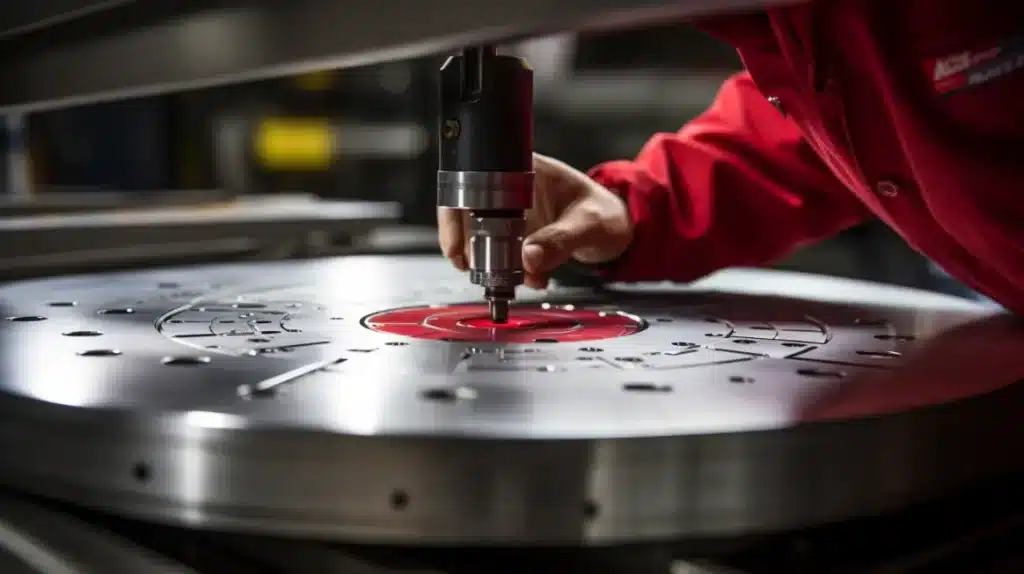Achieving a smooth, durable concrete surface requires careful finishing techniques that impact appearance, safety, and longevity. Proper finishing transforms concrete into a functional, slip-resistant surface, while poor methods can cause cracking and wear. This guide covers essential techniques, from troweling to specialized texturing, to help you achieve professional results for any project.
Troweling: The Foundation of Smooth Concrete
Troweling remains the most fundamental surface finishing technique, creating smooth, dense surfaces ideal for indoor applications and areas requiring easy cleaning. This method involves using a flat, rectangular tool to compress and smooth the concrete surface while it’s still workable.
The troweling process typically begins with floating, which levels the surface and brings cream (a mixture of cement, water, and fine particles) to the top. Once the concrete reaches the proper consistency—firm enough to support weight but still workable—troweling can begin.
Step-by-Step Troweling Process
Start with the first pass using a steel trowel held at a slight angle to the surface. Apply moderate pressure while moving the trowel in overlapping arcs across the concrete. This initial pass should occur when the surface has lost its sheen but before it becomes too stiff.
The second pass requires waiting until the concrete can support your weight on knee boards. Use firmer pressure and maintain the trowel at a lower angle to achieve greater smoothness. Multiple passes may be necessary depending on the desired finish quality.
For the final pass, apply maximum pressure while keeping the trowel nearly flat against the surface. This creates the smoothest possible finish and maximizes surface density.
Broom Finish: Combining Safety with Simplicity
Broom finishing creates textured surfaces that provide excellent traction while remaining relatively easy to execute. This technique involves dragging a broom across freshly troweled concrete to create grooves that improve slip resistance.
The timing for broom finishing is crucial. The concrete must be firm enough to retain the broom texture without the bristles sinking too deeply, yet soft enough to accept the pattern cleanly. Test a small area first to ensure optimal timing.
Achieving Consistent Broom Patterns
Choose your broom type carefully. Soft-bristled brooms create fine textures suitable for residential applications, while stiffer bristles produce coarser patterns ideal for areas requiring maximum slip resistance.
Maintain consistent pressure and speed while drawing the broom across the surface. Work in straight, parallel lines for uniform appearance, and avoid stopping or starting mid-stroke, which creates visible marks in the finished surface.
Clean the broom periodically to prevent concrete buildup that could create inconsistent textures. Some contractors prefer using multiple brooms to maintain pattern quality throughout large pours.
Exploring Additional Texturing Methods
Beyond basic troweling and broom finishing, several specialized techniques can create unique appearances and enhance surface performance.
Stamped Concrete
Stamped concrete uses textured mats or stamps pressed into the surface before final setting. This technique can replicate the appearance of stone, brick, or other materials while maintaining concrete’s durability advantages. Proper timing is essential—stamp too early and the pattern won’t hold; too late and the concrete won’t accept the impression.
Swirl Patterns
Creating swirl patterns involves using a float or trowel in circular motions across the surface. This technique produces decorative textures that also provide some slip resistance. Maintain consistent pressure and overlapping patterns for professional results.
Salt Finish
Salt finishing involves broadcasting rock salt across fresh concrete, then pressing it into the surface with a float. After curing, washing away the salt leaves small depressions that create texture and improve traction. This method works particularly well for pool decks and other wet areas.
Critical Factors Affecting Surface Quality
Several variables influence the success of surface finishing techniques, and understanding these factors helps ensure consistent results.
Concrete Mix Considerations
The concrete mix design significantly impacts finishing characteristics. Mixes with higher cement content generally finish more easily but may be prone to scaling. Aggregate size and type also affect surface texture and workability during finishing operations.
Water content plays a crucial role in finishing timing and quality. Excessive water weakens the surface and extends working time unpredictably, while insufficient water makes finishing difficult and may result in surface defects.
Weather Impact
Temperature and humidity dramatically affect concrete workability and finishing windows. Hot, dry, or windy conditions accelerate surface moisture loss, shortening the time available for finishing operations. Cold weather slows setting and may require extended protection.
Plan finishing operations around weather conditions, and have contingency measures ready for unexpected changes. Wind screens, misting systems, and curing compounds can help maintain proper surface conditions during finishing.
Quality Control and Long-Term Performance
Successful surface finishing extends beyond technique execution to include proper quality control and curing practices.
Monitor surface moisture content throughout the finishing process. The concrete should maintain adequate plasticity for the chosen technique while developing sufficient strength to support finishing operations.
Inspect finished surfaces for defects such as trowel burns, segregation, or inconsistent texture. Address issues immediately while the concrete remains workable, as repairs become increasingly difficult as the material hardens.
Proper curing following surface finishing is essential for achieving design strength and durability. Apply curing compounds or coverings as soon as finishing operations allow, protecting the surface from moisture loss that could cause cracking or scaling.
Material Management Considerations
Efficient material management contributes to successful finishing by ensuring consistent concrete quality throughout placement operations. Large projects may benefit from cement silos and other storage systems that maintain material consistency and reduce contamination risks.
Conclusion
Choosing the right surface finish depends on aesthetics, functionality, and constraints like budget and maintenance. Smooth finishes suit indoor spaces, while textured ones improve outdoor safety. Careful planning ensures durable, professional results.





